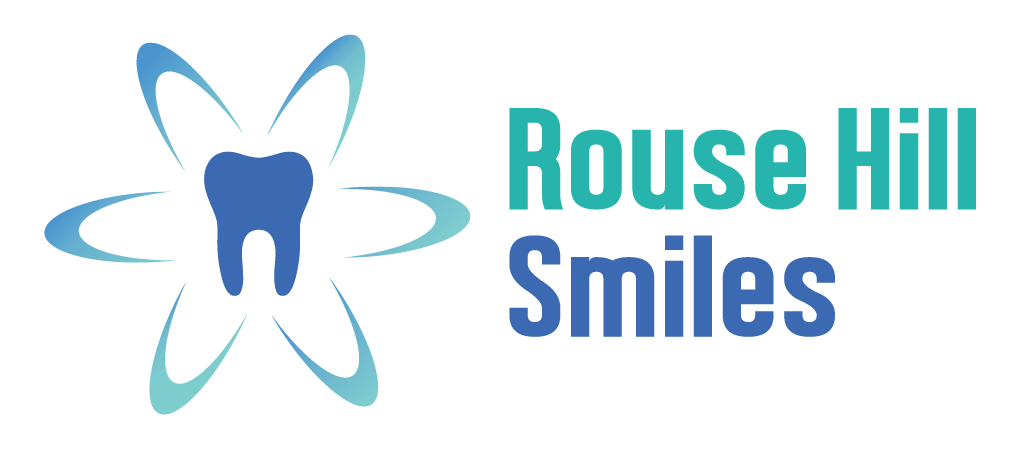What is the Difference between Retainers and Invisalign
service@womm
10 May 2024
No Comments
A dazzling smile is a great way to boost confidence, and for many, achieving that smile involves orthodontic treatment. But once your braces come off or your Invisalign journey reaches its end, a new question arises: retainers or Invisalign? While both play a role in maintaining your straightened teeth, they serve distinct purposes.
This article looks into the key differences between retainers and Invisalign, helping you understand which one is the right fit for your post-treatment smile journey.
What are Retainers for?
Dental Retainers do not get their due popularity in the world of orthodontics. These custom-made, removable (or sometimes fixed) appliances are worn after orthodontic treatment to prevent your teeth from shifting back to their original positions.
What are the Types of Retainers:
- Removable Retainers: These are the most common type, typically clear plastic trays that fit correctly and comfortably over your teeth. They are usually worn full-time for a certain period after treatment, gradually transitioning to nighttime wear only as your teeth stabilise.
- Fixed Retainers: These are thin wires bonded to the back of your lower front teeth. They require less maintenance but might affect speech or make cleaning more challenging. Therefore, do ask your dentist for tips to properly clean your teeth when you have fixed retainers.
What are the Benefits of Dental Retainers:
- Maintain The Newly Positioned Teeth: The primary function of retainers is to prevent or avoid teeth from shifting back to their pre-treatment positions.
- To Main Teeth Alignment with Comfortable and Discretion: Removable retainers are comfortable to wear and nearly invisible, making them a discreet way to maintain your smile.
- They are Highly Durable: With proper care, retainers can last for years.
Things to Consider with Retainers:
- Discipline is Important: Removable retainers require consistent wear to be effective.
- Lost or Damaged Retainers: Lost or damaged retainers need prompt replacement to prevent teeth from moving. If you lose or damage your retainer, find a dentist near you to get new retainers that are durable and fit properly.
- Cleaning Routine: Regular cleaning with a soft toothbrush and toothpaste keeps your retainers fresh and hygienic.
What is Invisalign for :
Invisalign is a clear kind of aligner system that gradually straightens teeth through a series of custom-made, removable trays. Unlike traditional braces, Invisalign uses a gentle, continuous force to move teeth into their desired positions. Usually, people who are above the age of 18 prefer this course of orthodontic treatment, or they need minor teeth alignment, such as fixing the gap between their front teeth. They are easy to fix, and you can remove them during important events. The biggest qualm people have with Invisalign is the cost. However, it is best to consult your dentist about how much Invisalign would cost to address your concerns so you get a clearer picture.
What is The Invisalign Process:
- Consultation and Treatment Plan: You’ll discuss your goals and undergo a dental exam with your dentist or orthodontist. A digital scan or mould of your teeth is used to create a customised treatment plan.
- Series of Aligners: A series of clear plastic aligners are created based on the planned tooth movement. You’ll wear each aligner for a specific period (typically 1-2 weeks) before switching to the next one in the series.
- Regular Monitoring: Regular appointments with your dentist or orthodontist are very important to monitor progress and ensure proper aligner fit.
- Retainers for Life: Once your treatment is complete, you’ll transition to wearing retainers just like after traditional braces.
What are the Benefits of Invisalign:
- Clear and Discreet: Invisalign aligners are almost invisible, making them very popular amongst adults and teens who prefer a less noticeable treatment option.
- Removable for Meals and Cleaning: Aligners can be removed for eating and cleaning, offering greater convenience and ease of maintaining oral hygiene.
- Comfortable: The smooth plastic material of aligners minimises discomfort compared to traditional braces.
Things to Consider with Invisalign:
- Treatment Time: Invisalign treatment can take longer than traditional braces, depending primarily on the complexity of your case.
- Compliance is Crucial: Consistent wear of the aligners for the prescribed duration is essential for successful treatment.
- Cost: Invisalign is usually more expensive than our traditional braces.
How to Choose Between Retainers and Invisalign?
Both retainers and Invisalign play vital roles in maintaining your smile, but the choice between them depends on your specific needs and treatment history. It is important to note that since these procedures are not emergency dental procedures, you can opt for a dentist near you or the ones that are a little farther away.
When to Choose Retainers:
- Post-Treatment Maintenance: Retainers are essential after any orthodontic treatment, including braces or Invisalign, to prevent teeth from shifting back.
- Minor Adjustments: If you experience minor shifting after your initial treatment, your dentist or orthodontist might recommend retainers to gently nudge your teeth back into place.
- Cost-Effectiveness: Retainers are generally more cost-effective than Invisalign for long-term wear.
When to Choose Invisalign:
- Ongoing Misalignment: If you have ongoing teeth misalignment that wasn’t fully addressed by previous treatment, Invisalign can offer a more discrete and comfortable solution for correction.
- Mild to Moderate Crowding: Invisalign can effectively address mild to moderate cases of teeth crowding, offering a less conspicuous alternative to traditional braces.
- Lifestyle Considerations: If you prioritise a removable appliance for convenience and social reasons, Invisalign might be a better fit due to its removability during meals and cleaning.
Consult a Dentist Near You
Ultimately, the best choice between retainers and Invisalign hinges on your individual situation and your dentist or orthodontist’s expert guidance. Here’s why consulting your dental professional is crucial when making this decision:
- Personalised Assessment: They can assess your teeth, bite, and treatment history to determine the most suitable option for your specific needs.
- Treatment Plan Development: They can develop a personalised treatment plan tailored to your unique case, whether it involves retainers, Invisalign, or a combination of both.
- Monitoring and Adjustments: Regular check-ups with your dentist or orthodontist allow for monitoring progress, ensuring proper fit for your retainers or aligners, and making any necessary adjustments throughout treatment.
What are Your Other Options Beyond Retainers and Invisalign
While retainers and Invisalign are popular choices, other options exist for maintaining your smile after orthodontic treatment; these options can better suit your needs, your budget as well as your preference:
- Bonded Retainers: As mentioned earlier, these are thin wires permanently bonded to the back of your teeth. They offer a more discreet option than removable retainers but require visits to a dentist for adjustments or removal.
- Palatal Expanders: These appliances are primarily used for younger patients with narrow palates. They can be fixed or removable and help prepare the jaw for further orthodontic treatment.
- Headgear: Headgear might be used in conjunction with braces or aligners to apply additional pressure and correct specific bite issues.
Maintaining a healthy, beautiful smile is an ongoing process. Retainers and Invisalign offer effective solutions at different stages of your orthodontic journey. By understanding the distinctions between them and consulting your dental professional, you can make the right decision and confidently find the path to a smile that lasts a lifetime. Visit our clinic to know more about your options. Schedule an appointment with Rouse Hills Smiles Dental Care to get the best orthodontic treatment for your beautiful smile.
FAQs on Dental Retainers
1. How to clean retainers?
- Brushing: Gently brush your retainers daily with a soft-bristled toothbrush and a mild soap or non-abrasive toothpaste. Avoid harsh scrubbing or abrasive cleansers that can scratch the surface.
- Rinsing: Rinse your retainers thoroughly with cool water after brushing to remove any soap or toothpaste residue.
- Deep Cleaning: Once a week, soak your retainers in a denture cleaning solution (consult your dentist for recommendations) for 15-30 minutes. Do not use hot water, bleach, or harsh chemicals, as these can damage the retainer material.
- Brushing Again: After soaking, rinse your retainers thoroughly again and brush them gently with a soft toothbrush to remove any loosened debris.
2. Is it necessary to wear retainers at night?
In most cases, yes, wearing your retainers at night is essential to maintain your straightened teeth. Here’s a breakdown of typical retainer wear patterns:
- Initial Phase: After completing braces or Invisalign treatment, you might need to wear your retainers full-time for several months, gradually transitioning to nighttime wear only as your teeth stabilise.
- Long-Term Wear: Many dentists recommend wearing retainers for at least 8 hours each night, ideally throughout your lifetime, to prevent teeth from shifting back to their original positions.
It’s crucial to follow your dentist’s specific instructions regarding the duration of retainer wear.
3. Can you whiten your teeth while wearing retainers?
Yes, you can professionally whiten your teeth while wearing retainers, but with a few considerations:
- Over-the-counter whitening products: Some whitening toothpaste or rinses might be safe to use with retainers. However, consult your dentist before using any whitening product, as certain ingredients can stain the retainer material.
- Professional whitening treatments: If you’re considering professional whitening procedures, discuss this with your dentist beforehand. They might recommend whitening your teeth before receiving your retainers or advise on using a custom whitening tray that fits over your teeth without the retainer.
Important points to remember:
- Avoid harsh whitening products: Stay away from whitening products containing abrasive ingredients or peroxide, as these can damage your retainers.
- Clean your retainers after whitening: After using any whitening product, clean your retainers thoroughly to remove any residue that might stain the material.
Our Principal Dentist
Dr. Teena and the Rouse Hill Smiles team are dedicated to providing patients of all ages with the highest quality of care.

Dr. Teena Bali
Dentist
Quick Contacts
- Rouse Hill Plaza G07-G08, 2-4 Aberdour Avenue Rouse Hill, NSW 2155
- enquiries@rousehillsmilesdentalcare.com.au
- (02) 8320 0548








Leave a Reply
You must be logged in to post a comment.